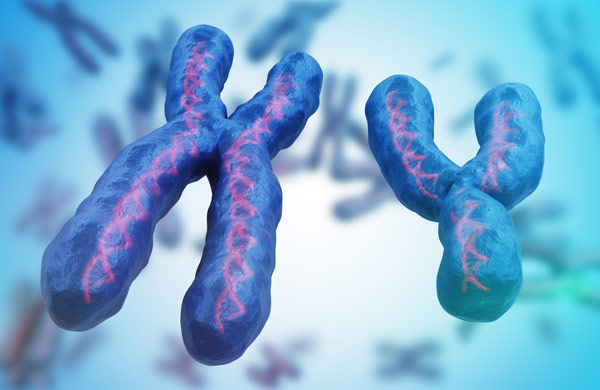Ambiguous Genitalia/Intersex

Ambiguous genitalia, also referred to as intersex or disorders of sexual differentiation, is a rare condition where an infant’s sex organs have not clearly formed as either male or female. In these situations, the baby’s genitals may be underdeveloped, or have the characteristics of both sexes. In other situations, their external sex organs do not match their internal sex organs.
 Background and Attributes
Background and AttributesAt conception, a baby’s gender is based on their sex chromosomes. The mother provides an X chromosome. The father provides either an X or Y chromosome to determine the baby’s gender. Between the mother and the father, the chromosome combination will create either a female embryo (XX) or a male embryo (XY).
Interestingly, embryos start with two gonads and both the male and female embryos look the same at the beginning. The gonads evolve and either become testes or ovaries and the embryo will normally develop a male or female reproductive anatomy. In the case of ambiguous genitalia, the gonads do not evolve normally.
Ambiguous genitalia is a disorder of anatomy development, and some treatments are available.
Ambiguous genitalia may be identified prenatally but is typically identified after birth. The characteristics of the disorder will vary. The following chart shows common attributes of the disorder.
Ambiguous genitalia is also evident when there is a mismatch between the external genital anatomy and the genetic gender (XX or XY) and/or internal sex organs.
As an embryo develops, the sex organs (male or female) develop from the same tissue. The determining factor of normal sex organ development depends on the chromosome makeup and the presence of different hormones.
When there is a disturbance in the development of a fetus’s sex organs due to the abnormal presence or absence of certain hormones, ambiguous genitalia conditions advance, causing erroneous development of male or female anatomy.
There are many types of ambiguous genitalia. The following chart outlines some of the most common types of the disorder. While this is not an exhaustive list, they are some of the most common causes of ambiguous genitalia.
Ambiguous genitalia may be diagnosed during prenatal life, soon after birth, and in some cases in the teen years. Most children, however, are diagnosed at birth. A proper diagnosis may include the following tests:

Once a diagnosis has been made, parents can decide on treatments and collect information about sexual development during puberty.
Treatments for ambiguous genitalia will vary, of course, based on the child’s individual situation. Most conditions are not life threatening; however, it can create some social problems for the parents and the child. Therefore, a team of experienced specialists may be utilized to provide optimal care for the child.
The team may include neonatologists, urologists, geneticists, endocrinologists, and psychiatrists. Surgery by an urologist may be necessary to correct anatomical irregularities. Other treatments may include medications prescribed by an endocrinologist like Dr. Joshua Smith
Dr. Joshua Smith is the region’s only specialist in pediatric endocrinology and is specifically trained to properly diagnose and treat ambiguous genitalia conditions.
If your child has been diagnosed with this condition, call Dr. Smith at 208-523-1122 for an appointment, or fill out the form below.